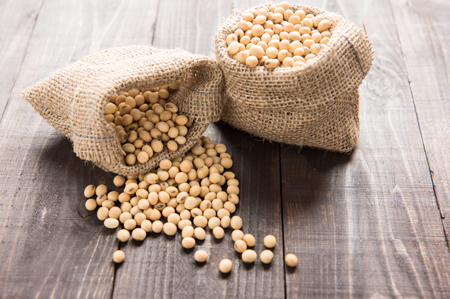 (Agrimoney) – It often happens that the coming of a weekend brings a bit of a change of tack in ag markets, with the prospect of a couple of days without being able to trade encouraging a bit of profit-taking.
(Agrimoney) – It often happens that the coming of a weekend brings a bit of a change of tack in ag markets, with the prospect of a couple of days without being able to trade encouraging a bit of profit-taking.
So it appeared this time, with soybeans, for instance, easing back 0.1% to $9.74 ¾ a bushel for November delivery, now the spot contract, as of 09:45 UK time (03:45 Chicago time) after the expiry on Thursday of Chicago’s September lots.
This despite the emerging worries over Brazilian dryness, as the legally proscribed sowing window opens (today) in the key growing state of Mato Grosso.
Such concerns have gained an extra edge with the increased chance of a La Nina, with the US National Weather Service’s Climate Prediction Center raising to 55-60% its estimate of the chances of the weather pattern emerging in the northern hemisphere autumn-winter period.
Last month, the agency had said there was a 25-30% chance of La Nina conditions over the winter.
‘Very dry conditions’
“The trade will keep a close eye on” the La Nina, said CRM AgriCommodities, “as Argentine and southern Brazilian crops which are just about to get planted could be threatened by very dry conditions”.
Indeed, La Ninas are linked with drier-than-normal conditions in southern Brazil, northern Argentina, Paraguay, and Uruguay during the September-to-December period.
Still, there were some demand worries too, with Oil World on Thursday pegging China’s 2017-18 soybean imports flat at 93m tonnes, flagging large carry-in stocks and prospects for a larger domestic harvest.
The US Department of Agriculture on Tuesday raised its forecast by 1.0m tonnes to 95.0m tonnes.
Exports surge
Also in the oilseeds complex, palm oil, which touched a six-month high in the last session, fell back to 2,845 ringgit a tonne, down 0.8% on the day, despite some strong data on Malaysian exports.
Cargo surveyor ITS pegged Malaysia’s exports up markedly, 22%, month on month, in the first 15 days of September.
That compares with a 6.9% pace of increase in the first 10 days of this month.
Still, on the negative side for values, Malaysia said it would for next month raise its palm export tax by 0.5 points to 6.0%.
Soyoil vs palm oil
There are also remains a debate, at a conference in India, on palm oil price prospects, with Oil World seeing a drop in Kuala Lumpur prices to 2,600 ringgit a tonne on the October-to-December timescale.
Palm oil’s discount to rival vegetable oil soyoil will widen to up to $120 a tonne.
However, analyst Dorab Mistry forecast a narrowing in this discount, helped by growth of 1.6% to 15.5m tonnes in Indian edible oil imports in 2017-18, starting in November, with palm purchases seen up 3.5%.
In Chicago, soyoil futures for December stood down 0.1% at 35.05 cents a pound.
‘Key supportive feature’
Grain futures were easier too in Chicago, with corn for December, also now the spot contract, trading down 0.3% at $3.53 ½ a bushel.
The inability of the contract “to push above the 20-day moving average”, at $3.55 ½ a bushel, “has got to be a concern for the speculative length in this market,” said Benson Quinn Commodities.
This is especially true given that fund positioning, and in particular their net short in corn futures and options, “strikes me as the key supportive feature in the corn market”.
It was also not so helpful that Dalian corn futures fell back 0.8% to 1,697 yuan a tonne for January, reversing many of the gains of the last session, on a Chinese announcement of massive support for its ethanol industry.
Wheat eases
Chicago wheat for December, meanwhile, eased by 0.3% to $4.41 ½ a bushel.
“Black Sea values are basically unchanged this week and have a competitive edge on business,” said Benson Quinn Commodities.
Futures in Australia, where dryness is in the spotlight, also fell back overnight, by 1.1% to Aus$268.00 a tonne for the east coast January contract.
Balancing act
In New York, cotton futures for December eased by 0.4% to 68.82 cents a pound.
“The market is still balancing up just how much of the extra cotton the USDA forecast in Tuesday’s Wasde will have been lost to hurricane damage,” said Ecom.
On the supportive side, the trading house flagged the Cotton on Call report which showed that mills still have some 30,000 cotton contracts to hedge against futures, “which will mean the market will find buyer support as we drift lower”.
However, from technical analysis, the “short term-medium trend is down” for prices.




